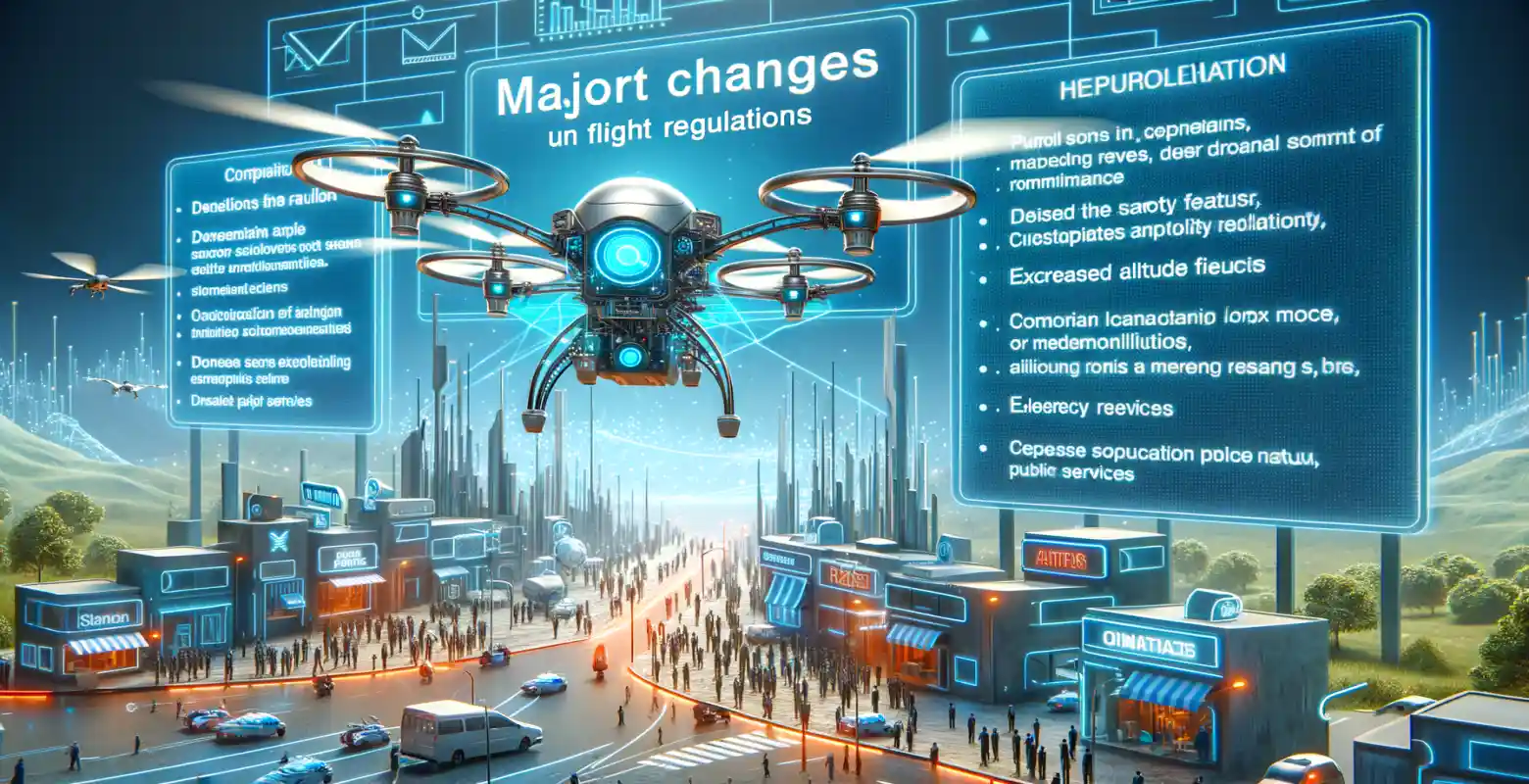The most important changes in regulations concerning drone flights in 2025
Introduction
Drone flights have become extremely popular in recent years, both for recreational and commercial purposes. With the increasing number of drones in the sky, it becomes necessary to introduce appropriate legal regulations that will ensure safety and order in the airspace. The year 2025 brings significant changes in regulations regarding drone flights, aimed at adapting to new technologies and the growing needs of users. In this article, we will look at the most important changes introduced in the regulations, their significance, and potential impact on drone users.
New categories of drone users
One of the key changes in the regulations regarding drone flights in 2025 is the introduction of new categories of users. The new regulations distinguish users into three main groups: recreational, commercial, and institutional. Each of these groups has its specific requirements and limitations, aiming to better adapt the regulations to the diverse market needs.
Recreational users are individuals who use drones for hobby purposes, without the intention of generating profits. The new regulations require users in this category to register their drones if their weight exceeds 250 grams. Additionally, they must adhere to restrictions regarding flight altitude and geographical zones where they can fly.
Commercial users are businesses and individuals who use drones for profit-making purposes, such as aerial photography, deliveries, or technical inspections. In their case, the new regulations introduce the requirement of obtaining a drone pilot license and notifying the relevant supervisory authorities of planned flight operations.
Institutional users include government agencies, universities, and other organizations that use drones for research, training, or public safety purposes. For this group, the regulations are more flexible but still require the reporting of flights and compliance with specific safety standards.
Expanded no-fly zones
Another significant change is the expansion of no-fly zones, aimed at protecting privacy and ensuring safety in key areas. The new regulations introduce additional restrictions near airports, military facilities, government buildings, and areas with high population density.
According to the new regulations, drone pilots must maintain a minimum distance from these zones, and any attempt to violate them may result in severe financial penalties and confiscation of equipment. The introduction of these changes aims to minimize the risk of collisions with aircraft and protect sensitive areas from unauthorized surveillance.
Introduction of drone identification technology
One of the most important elements of the new regulations is the introduction of the obligation to use drone identification technology. Every drone weighing over 250 grams must be equipped with a remote identification system that allows supervisory authorities to track its movements and identify the owner.
This technology aims to increase safety in airspace by enabling quick response in case of incidents and preventing illegal operations. Therefore, if necessary, law enforcement agencies will be able to identify the drone and its operator, facilitating investigation and preventing potential threats.
Training and certifications for operators
The new regulations emphasize the importance of enhancing the qualifications of drone operators by introducing mandatory training and certifications. All drone operators, regardless of the category of use, must undergo appropriate training culminating in certification confirming their skills and knowledge of the regulations.
These training sessions cover both theoretical aspects related to aviation law and practical aspects of operating a drone in various conditions. The goal of these actions is to enhance the safety of drone operations and prepare operators to deal with unforeseen situations.
Benefits and challenges related to the new regulations
The introduction of new regulations regarding drone flights brings both benefits and challenges. On one hand, these regulations aim to increase safety in airspace, protect privacy, and better adapt the law to the dynamically evolving drone technology.
On the other hand, the new regulations may pose a challenge for some users, especially those operating in small businesses, who must adapt to new licensing and technical requirements. Additionally, the need to invest in training and certifications may pose an additional financial burden.
Future trends and further development of regulations
As drone technology continues to advance, we can expect further changes in regulations that will adapt to new realities. It is anticipated that in the future, greater emphasis will be placed on integrating drones into automated air traffic management systems and developing autonomous technologies.
Regulations may also evolve towards greater harmonization at the international level, facilitating drone operations in different countries and ensuring uniform safety standards. The further development of identification technology and anti-collision systems will certainly influence the shaping of future regulations.
Summary
The upcoming changes in regulations regarding drone flights in 2025 are crucial for ensuring safety and order in airspace. New categories of users, expanded no-fly zones, drone identification technology, and mandatory training are just some of the elements that will impact the way drones are used and managed.
Although the new regulations may pose a challenge for some users, their introduction is necessary to meet the growing market demands and ensure that drones can be used safely and efficiently. It is worthwhile to follow the further development of regulations and adapt to changes in order to fully benefit from the opportunities offered by drone technology.






Number of comments: 0